Hailstorm is an Android TV scaling program designed by Netflix to reduce the Netflix integration effort for partners on the Android TV platform. It aims to shorten partner’s time to market and to unlock more pay TV operators’ device reach opportunities, making Netflix even more accessible to members around the world. As of today, Netflix has observed an initial reduction of certification time from 3 months to 1 week from the pilot projects.
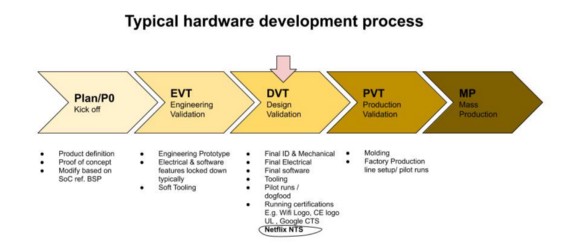
As Netflix want their certified devices (Netflix Ready Device) to deliver an optimal streaming and browsing experience to our members, they set high quality standards across key device metrics :
These metrics are highly dependent on the quality of the BSP (Board Support Package) which consists of both the hardware (electrical + mechanical) design and the system software (Middleware + Operating System + hardware drivers). In a typical development process, the SoC (Silicon-on-Chip) provider would release a reference BSP used by the ODM (Original Device Manufacturer) and (SI)System Integrator to build their own products. The product BSP should be locked down at the design verification phase where all certifications occurs, such as UL, CE, WIFI, Google CTS,GTS and Netflix NTS.
Although Android has done a great job in consolidating the middleware stack, it is difficult to lock down every single component (BSP) through the traditional device development model. Through years of experience in integrating Netflix with our partners, Netflix has
learned a variety of lessons causing the product BSP fragmentation, making difficult to scale up from the baseline SoC BSP.
These are just a few examples that cause development overhead ,resulting in all parties over the development process (from Silicon vendor, ODM, System integrator to Netflix) having to pay the tax for it, simply because it cannot guarantee consistent certification results for all products derived from the same SoC BSP.
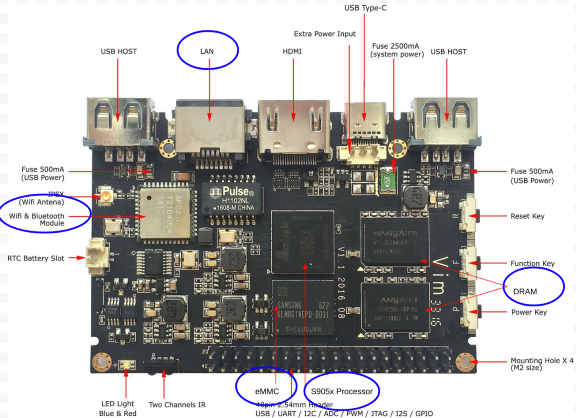
To defragmentize the BSP, they introduced a Netflix OTT BSP model to consolidate a set of features that could impact the Netflix quality standards described above. Netflix started by investing with the SoC (Silicon-on-Chip) provider to qualify the SoC reference BSP which accounts for the majority of core system designs in the final products. The diagram above uses Amlogic s905x development board as an example, highlighting the key hardware components that could impact Netflix:
Notice that Wifi, DRAM and HDMI all carry high frequency signals and typically require lots of tuning in layout and software design. ODMs or System Integrators usually would reference to the SoC BSP to their product design.
Hailstorm BSP model also introduces certification checkpoints to qualify SoC and ODM BSP and the final Operator product. Netflix collaborate with SoC partners to review their source code and ensure single source branch per silicon to eliminate software fragmentation. Furthermore, SoC would be responsible to audit the BSP of their customer to ensure the integrity and to understand the risk of changes. The goal is to reduce the integration effort required for ODM and Operators. Below you can find the workflow and the R&R (Roles & Responsibilities) of each party.
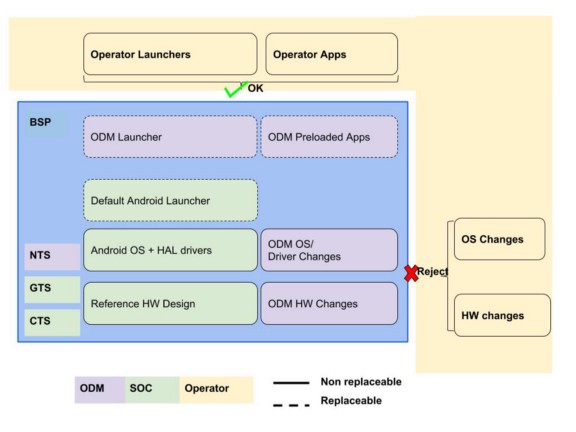
ODM could customize the following for operators
Once ODM BSP got certified:
1.Sideload 3rd party apps that conflict with Netflix application’s resources or cause security issues. E.g.
2. modify hardware PCB/Component (e.g. DDR RAM) once device is certified by Netflix
3. modify any Android OS / Linux / Drivers / BSP code may affect CTS/GTS /NTS results
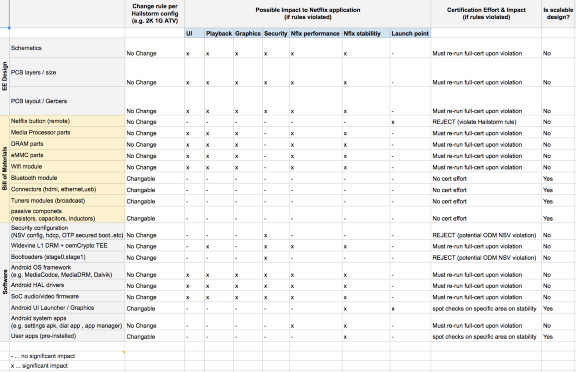
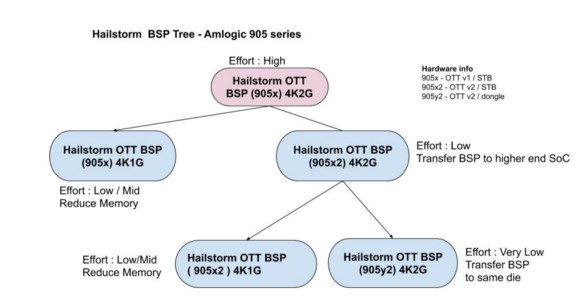
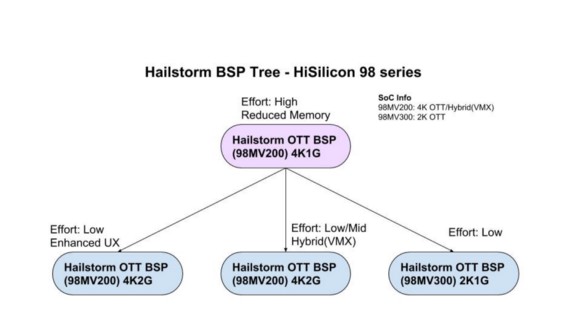
The OTT BSP Model is the baseline that encapsulates the Netflix core features. This would offer a solution to lower our partners’ development cost and to reduce their product time-to-market. A direct benefit of this model is to enable more Android TV turnkey products. In addition, Netflix does have a vision that could benefit not only a single BSP but could derive a family of BSP solutions based on a family of silicons.
The graphs above illustrate the potential to derive a family of BSP solutions using examples of the Amlogic S905x and the Hisilicon 98 families. Since the CPU, GPU and peripherals of all the SoCs in each family are similar, it is possible to scale BSP work from one to the others in the family without duplicating the effort. For instance:
And there are more BSPs that could be created based on the same mechanism such as a hybrid IP box with DVB tuners (DVB-S/T/C) or Conditional Access (CAS) on top of the OTT hardware.
We have completed nearly 20 success Netflix projects. With rich experiences on Netflix projects, it takes only 2 weeks to pass the Netflix hailstorm certification without operator's tier.
If you would like to take full advantage of the Hailstorm program benefits, contact us who could discuss further about the commercial requirements. Our team is looking forward to working with you!

Source: https://medium.com/@NetflixTechBlog/hailstorm-the-netflix-scaling-solution-over-android-tv-fd169366f828
©2003-2025 SDMC Technology Co., Ltd